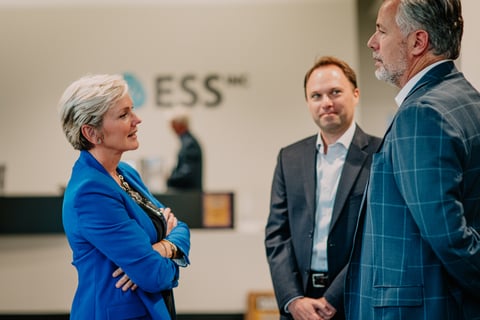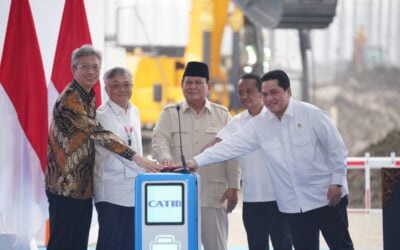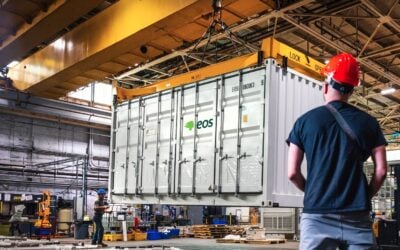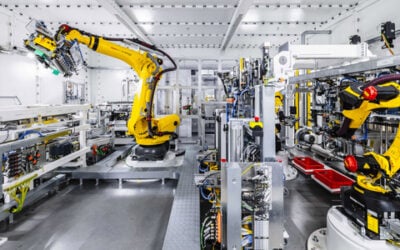
The US government Department of Energy is looking for public input into how US$675 million of funding for R&D into Critical Materials should be best directed.
The clean energy industry is speaking enthusiastically at the moment about the Inflation Reduction Act, the latest legislation to help fight climate change and grow the US’ installed base of renewable energy and storage and invest into domestically-based manufacturing.
Enjoy 12 months of exclusive analysis
- Regular insight and analysis of the industry’s biggest developments
- In-depth interviews with the industry’s leading figures
- Annual digital subscription to the PV Tech Power journal
- Discounts on Solar Media’s portfolio of events, in-person and virtual
However, while the Inflation Reduction Act is still waiting to be debated in the House and then be signed off by President Joe Biden – which reportedly could happen as early as this Friday – the earlier Bipartisan Infrastructure Law, which has already passed, is already unlocking funding for climate-friendly technologies.
Through the Bipartisan Infrastructure Law, billions will be pumped into the battery manufacturing ecosystem, something covered extensively by this site as the US$1 trillion law passed late last year.
Yesterday, the DOE issued a Request for Information (RFI) on how to develop its Critical Materials Research, Development, Demonstration and Commercialisation Program, for which the US$675 million of funding was made available through that legislation.
Even during the Trump era critical materials, including those used in the manufacture of lithium-ion batteries, were identified to be of national importance, considering all perspectives from energy and national security issues to domestic industrial competitiveness and more.
The DOE mentioned rare-earth elements, nickel, cobalt and lithium among those Critical Materials in a press release yesterday. It highlighted the materials’ importance in manufacturing clean energy technologies from batteries and solar PV modules to electric vehicles (EVs) and wind turbines.
The Critical Materials Program was established in 2020 through the US Energy Act of that year, before it was expanded by its inclusion in the Bipartisan Infrastructure Law. The programme seeks to develop components, materials and technologies as well as focusing on developing circular economy approaches and sustainable production, use and end-of-life treatment.
“We can follow through on President Biden’s clean energy commitments and make our nation more secure by increasing our ability to source, process, and manufacture critical materials right here at home,” US Secretary of Energy Jennifer Granholm said.
“The Bipartisan Infrastructure Law is supporting DOE’s effort to invest in the building blocks of clean energy technologies, which will revitalize America’s manufacturing leadership and bring along the benefits of good paying jobs.”
The RFI is open until 5pm on 9 September with respondents invited to email the DOE programme directly to [email protected].
Also yesterday, Granholm visited the Wilsonville, Oregon, factory of iron electrolyte flow battery company ESS Inc. ESS Inc’s batteries, packaged into commercial and industrial (C&I) and large-scale battery energy storage systems (BESS) use earth-abundant and non-toxic materials to create long-duration energy storage (LDES) assets.
That means up to 12 hours of storage capacity and the company claims that more than 80% of its raw materials come from domestic sources. With scale, ESS Inc believes its technology can be lower cost that other flow batteries, or even lithium-ion.
“In Oregon, we are seeing the impacts of the climate crisis firsthand. Commercial-scale battery storage is a key part of moving Oregon towards a clean energy future. The iron flow batteries being built by ESS Inc, are at the cutting edge of long-duration, sustainable battery technology, and they are being manufactured by workers right here in Oregon,” said Oregon Governor Kate Brown, who toured the factory together with Granholm and Senators Ron Wyden and Jeff Merkeley.
The occasion of the visit was to highlight the importance and potential impact of the Inflation Reduction Act. Granholm visited another US-based long-duration energy storage company, Eos Energy Enterprises, which makes batteries based on a zinc cathode, in April.






